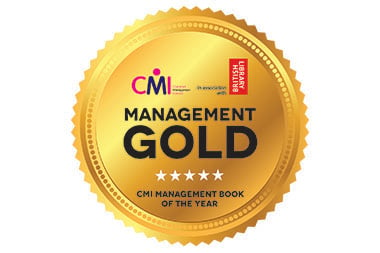Why paying more can reduce your cost base

The living wage will increase the hourly rate paid to many employees, but research shows that good management can turn that pay rise into a cost saving: the first in a series leading up to the announcement of the Management Book of the Year 2016 winners
By 2016 CMI Management Book of the Year shortlist author Vlatka Hlupic
This year, the ‘living wage’ has become central to political and economic debate. In July, Chancellor George Osborne surprised many observers by pledging a national living wage of £9 an hour by 2020, placing the issue at the heart of economic and social policy for the UK Government.
It has prompted considerable debate. Economists typically ask whether Britain’s firms can afford to pay higher salaries, sometimes adding that pay rises can only be afforded with staff cuts and/or higher productivity, which in turn is supposed to rest on a combination of investment, research and development and better education, lifting Britain out of a low-wage, low productivity cycle.
This conventional approach assumes that there is a linear relationship between wage rates and employment costs. But the latest research does not bear this out. The missing element is quality of management.
My research – and that of others – over the past 20 years shows conclusively that improving managerial capability has a huge impact on employee engagement, in turn improving performance while often lowering the cost base. Many employers could increase wages and cut costs, or improve profits, or both, but only if management is significantly improved.
Yet this whole dimension is downplayed or even ignored by economists and employers, and prioritising a more engaging management style remains a low priority.

Last year’s Parliamentary Commission on Leadership and Management concluded that only a minority of organisations are regarded as having strong leadership and management with highly engaged workers (Management 2020: Leadership to Unlock Long-term Growth). Most UK managers are underqualified and undertrained, with more than two-thirds of new managers given either inadequate or no training – with a strong correlation between inadequate management training and declining businesses.
Another report, by the Department for Business Innovation & Skills (Leadership & Management in the UK – the Key to Sustainable Growth, 2012), showed that best practice management development can significantly increase employee engagement and organisational performance, with a 20% improvement in management practices translating to an average 25% increase in the labour force.
Even a modest improvement in management can result in significantly higher wages, profits and returns to shareholders. Yet trying to attract business interest in the potential of these positive dynamics is surprisingly difficult.
This is partly because it sounds too good to be true – even though this is how some of the best and most successful employers operate – but more so because it involves radically different ways of thinking and acting: firstly, to regard the company as a complex network of relationships, not a static collection of costs and resources; and secondly, to move to a managerial style that is empowering, rather than controlling.
Once you make this Copernican shift, everything becomes clearer. You start to see operating costs in terms of behavioural dynamics, not just totting up items on a balance sheet. And you start to regard getting the best out of your staff as your main duty as a manager, not boxing them in with arbitrary targets and excessive rule-making.
The cost of weak management – poor customer experience, managerial time wasted dealing with high employee turnover – may be difficult to capture or anticipate, but it is still felt directly on the bottom line.
A prevailing culture in many businesses and public sector organisations makes empowering leadership and management difficult. A world of annual budgets, hierarchical corporate structures, lack of opportunities for career development and poor teamwork combine to result in low-engagement, low-productivity workplaces.
There is a better way – a much better way.
And there is a research base that demonstrates the logic and shows what superior business leadership and management look like. It can lead us to a world where everyone enjoys at least a living wage, where customers enjoy an enhanced service, and shareholders benefit from superior returns.

Prof Vlatka Hlupic’s The management shift: how to harness the power of people and transform your organization for sustainable success is shortlisted in the Practical Manager category of the 2016 CMI Management Book of the Year, in association with the British Library and sponsored by Henley Business School

Press & Media Enquiries
For more information or to request interviews, contact CMI's Press Team on 020 7421 2705 or email press.office@managers.org.uk


